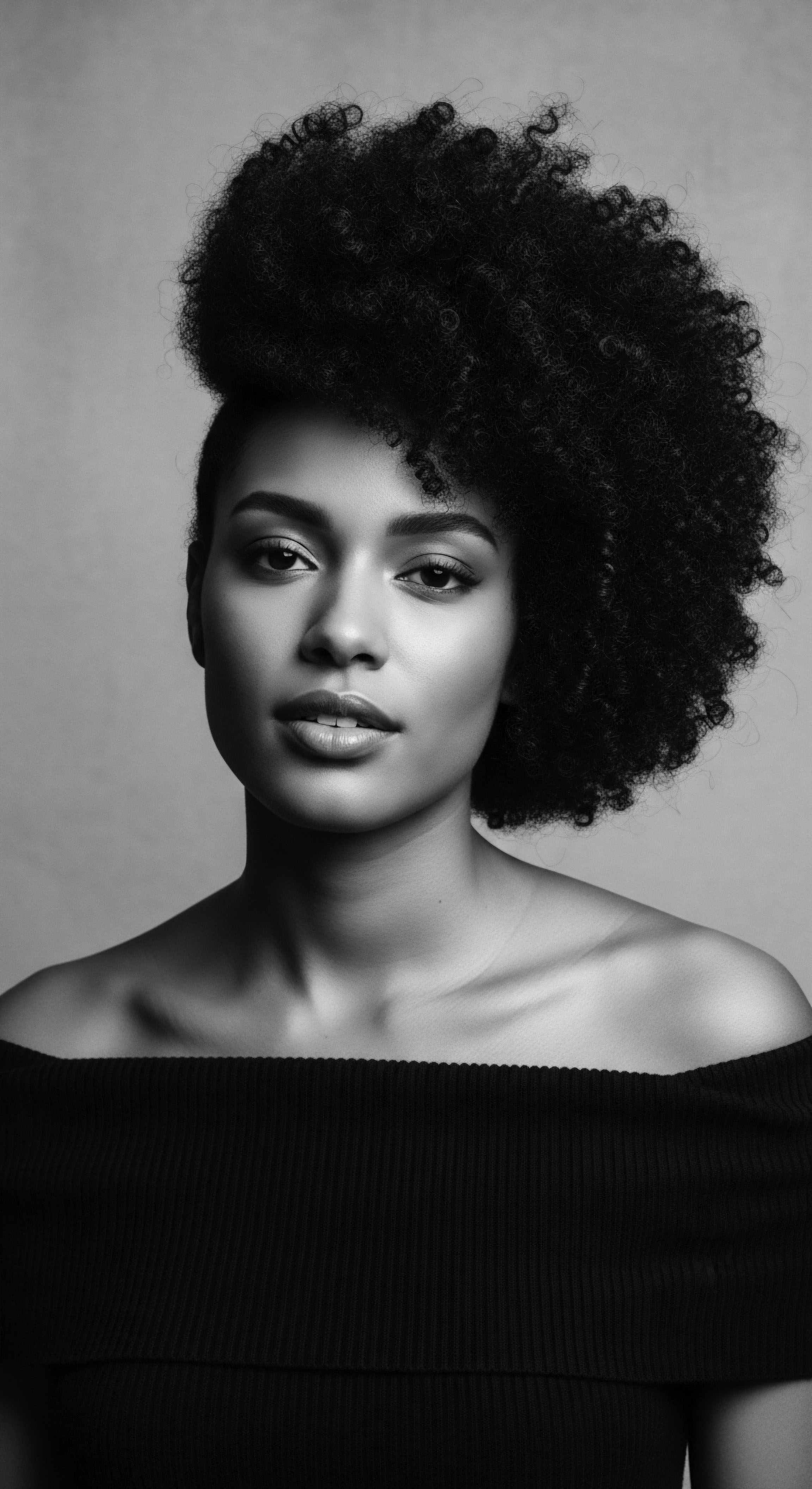
Roots
Consider, for a moment, the incredible story held within each strand of Afro-textured hair. It is a story not merely of biology, but of deep heritage , a living archive woven from resilience, ingenuity, and profound cultural wisdom. To understand how Afro-textured hair found protection throughout history, we must first attune ourselves to the echoes from the source—the ancient lands, the communal rhythms, and the profound connection to the earth that shaped early care practices. These historical methods were not arbitrary acts; they were responses, often deeply intuitive, to the unique qualities of coily and kinky hair, ensuring its well-being across generations and continents.

Ancestral Understandings of Hair Anatomy
The intricate structure of Afro-textured hair, characterized by its elliptical cross-section, tighter curl patterns, and fewer cuticle layers, naturally predisposes it to dryness and breakage if not handled with consideration. Before the advent of modern microscopy, ancient African communities possessed an innate understanding of these inherent qualities. Their care methods were not simply cosmetic; they were acts of preservation, designed to retain moisture and guard against environmental stressors.
This practical knowledge, passed through oral traditions, reflected a keen observation of how hair behaved and what elements from their natural surroundings could offer succor. The coil’s inherent fragility, its tendency to resist moisture penetration, and its capacity to hold complex styles were all recognized.
The historical methods of Afro-textured hair care represent a vibrant tapestry of ancestral wisdom, shaped by the unique biology of coily strands and the demands of their environment.
Consider, for instance, the Kushite royalty from ancient Sudan and Egypt, whose elaborate hairstyles, often braided and adorned, are depicted in temple carvings from millennia past. These visual records speak to a sophisticated understanding of hair manipulation that respected its natural tendencies while also creating statements of tribal identity and religious belief. The practical science, though uncodified in written texts, existed in the hands that meticulously styled, the eyes that discerned optimal moisture levels, and the collective wisdom that identified beneficial botanicals.

Early Environmental Care Factors
The diverse climates of Africa, from arid deserts to humid rainforests, played a significant role in shaping hair care approaches. In dry regions, the focus intensified on moisturizing and sealing. Shea butter, often called “women’s gold” in West Africa, has been used for centuries to protect skin and hair from harsh sun, wind, and dust. Its traditional extraction involves drying and grinding shea nuts, then boiling the powder to release the butter—a laborious process underscoring its value.
This butter, rich in vitamins A and E, offers deep nourishment, acting as a natural emollient and a protective shield. The application of such emollients was a direct biological response to the environment’s challenges, safeguarding hair from desiccation.
- Shea Butter ❉ Extracted from the nuts of the shea tree, historically used for its moisturizing and protective qualities against environmental damage.
- African Black Soap ❉ A traditional cleanser from West Africa, made from plantain skins, cocoa pods, and various oils, valued for its gentle cleansing without stripping natural oils.
- Natural Oils ❉ Various plant-based oils, such as palm, coconut, and castor oil, were employed to lubricate strands, aid flexibility, and enhance sheen.

What Ancestral Lexicon Illuminated Hair Care?
Beyond the physical actions, the very language used to describe hair and its care held cultural weight. Terms for specific styles, tools, or ingredients often carried meanings related to status, spiritual beliefs, or community roles. This lexicon formed a verbal repository of care, connecting generations through shared understanding and practice.
The importance of hair was so profound in some West African cultures, like among the Yoruba people of Nigeria, that the head and hair were considered equally vital, with care for both believed to bring good fortune. This elevates hair care beyond mere grooming; it becomes a spiritual endeavor, a conduit for positive energy and connection to ancestral lines.
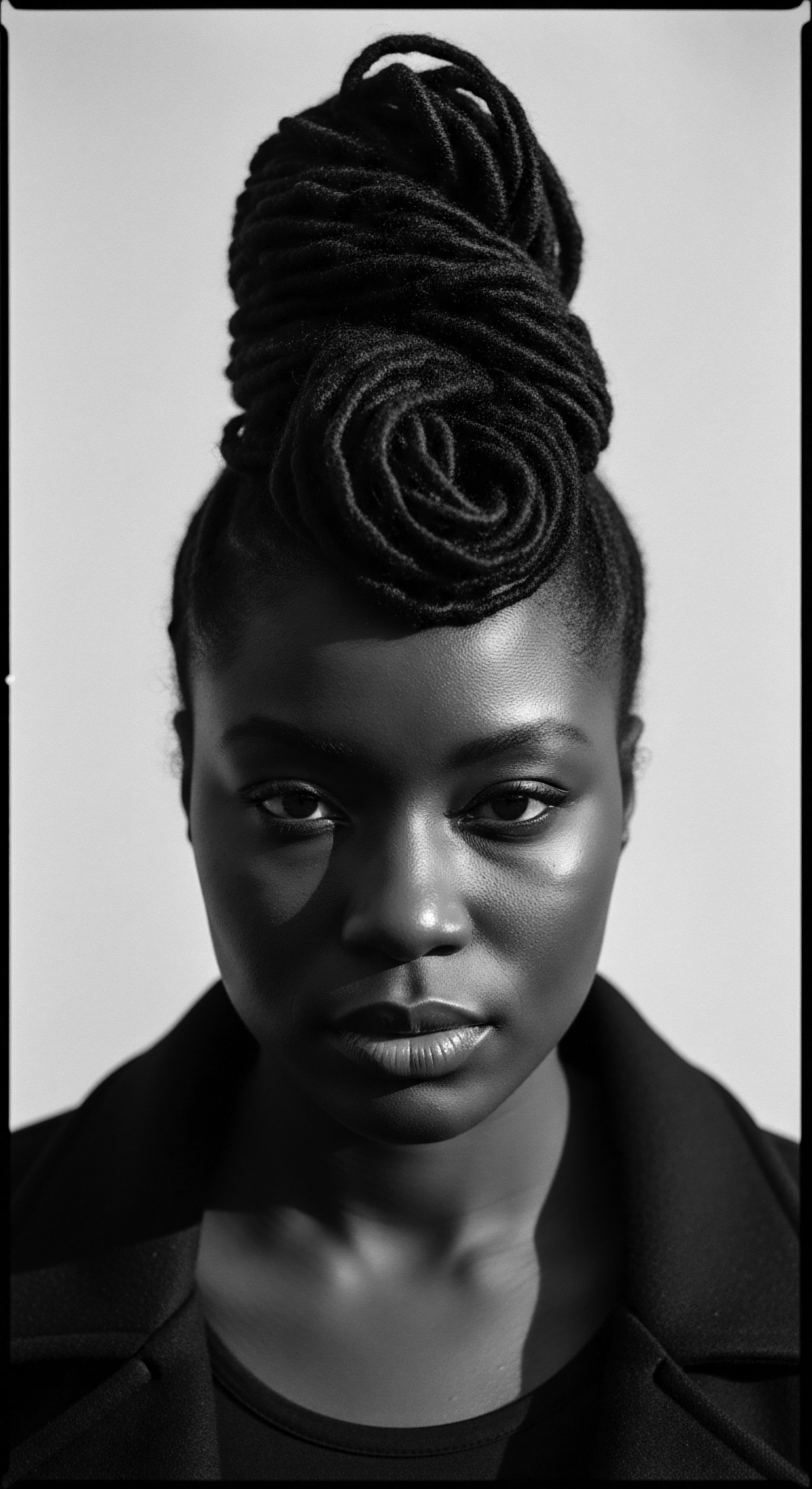
Ritual
The historical care of Afro-textured hair often manifested as ritual—a series of deliberate actions, imbued with cultural significance, performed with a regularity that spoke to profound respect for one’s crown. These rituals were not solely about aesthetics; they were acts of preservation, community building, and identity affirmation. The methods employed, from intricate styling to the purposeful use of specific tools and adornments, all served to protect the hair from the rigors of daily life and the environmental elements, while simultaneously broadcasting social narratives.
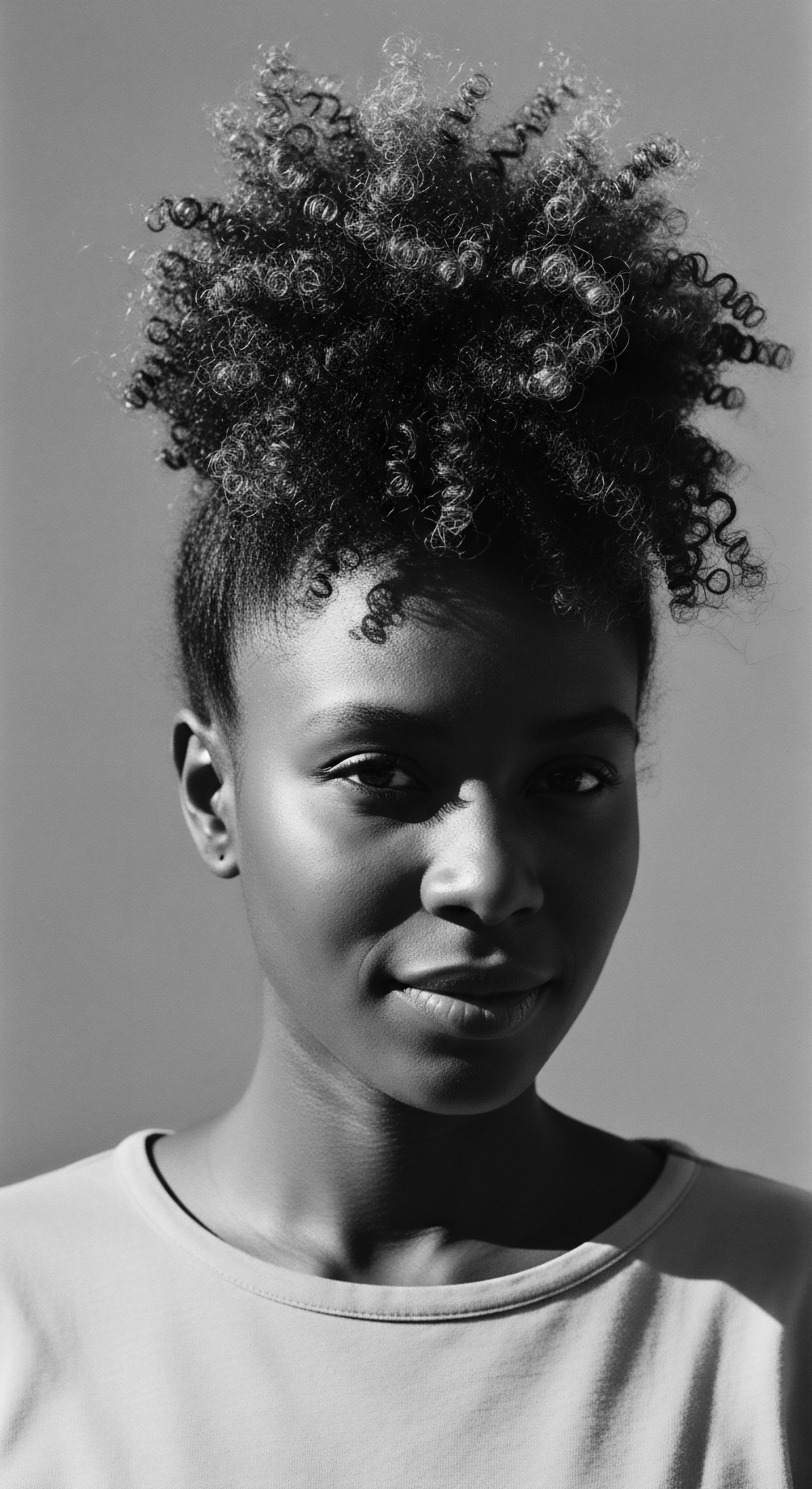
Protective Styling ❉ A Legacy of Defense and Design
Perhaps the most ubiquitous historical care method for Afro-textured hair was the implementation of protective styles . Braids, twists, and locs, far from being simply decorative, served as a primary defense mechanism against breakage, tangling, and excessive manipulation. These styles encased the hair, minimizing exposure to environmental factors such as sun and wind, which could lead to dryness and damage. The complexity and longevity of many traditional styles meant less frequent manipulation, allowing hair to rest and retain its length.
Protective styles were not just aesthetic choices, but a foundational historical method for safeguarding Afro-textured hair from external stressors and promoting length retention.
Ancient civilizations in Africa, dating back thousands of years, utilized complex braiding patterns as a form of non-verbal communication. In societies across Ethiopia, Sudan, Djibouti, Somalia, and Eritrea, specific braid patterns identified one’s social standing, marital status, wealth, kinship, and even religious affiliations. During the period of enslavement in the Americas, this practice took on another dimension; enslaved African women ingeniously braided hair patterns that served as maps for escape routes, sometimes even weaving rice and seeds into their hair for sustenance on their journeys. This historical context underscores the depth of purpose behind these styles, extending beyond mere hair care to acts of survival and resistance.

What Traditional Tools Aided Hair Preservation?
The tools used in ancestral hair care were crafted with an intimate understanding of Afro-textured hair’s unique characteristics. The Afro comb , or hair pick, boasts a history spanning over 5,500 years, with archeological findings from Kush and Kemet (ancient Sudan and Egypt) revealing elaborately carved wooden, bone, and ivory combs buried alongside their owners. These early combs, often with long, wide teeth, were designed to gently detangle and shape hair, reaching the scalp without causing undue stress. Their design spoke to a need for tools that could navigate the tight coil without tearing or snagging, a common challenge for hair with a high curl density.
| Tool Wide-Toothed Combs |
| Traditional Use and Significance Used across various African cultures for gentle detangling and styling; often carved with symbolic motifs. |
| Relevance to Hair Protection Minimized breakage during detangling, respected the hair's natural curl pattern, distributed oils evenly. |
| Tool Fingers |
| Traditional Use and Significance Primary tool for intricate braiding, twisting, and applying products; facilitated communal hair care rituals. |
| Relevance to Hair Protection Reduced mechanical stress, allowed for tactile assessment of hair condition, enabled precise sectioning for protective styles. |
| Tool Adornments |
| Traditional Use and Significance Beads, cowrie shells, gold, and other materials used for decoration, often signifying status or ceremonial importance. |
| Relevance to Hair Protection Provided structural support for styles, kept hair contained, added weight to prevent frizz and unraveling. |
| Tool Clay Jars/Gourds |
| Traditional Use and Significance Storage vessels for natural oils, butters, and herbal mixtures used in hair treatments. |
| Relevance to Hair Protection Preserved the potency of natural ingredients, protected them from spoilage, maintained a cool environment. |
| Tool These tools, simple yet effective, underscore the ancestral ingenuity in crafting solutions tailored to Afro-textured hair’s unique needs, ensuring its historical protection and aesthetic integrity. |

The Art of Intentional Application
Beyond the tools, the techniques themselves were art forms. The purposeful sectioning of hair, the precise tension applied during braiding, and the deliberate coating of strands with natural emollients were all learned skills, passed from elder to youth, often in communal settings. These gatherings for hair care fostered social bonds and served as crucial spaces for storytelling and the transmission of knowledge, ensuring that the methodologies endured through time.
The careful, almost reverent touch applied during these sessions reinforced the hair’s sacred status. It spoke to an understanding that gentle handling was paramount for hair that, though strong, could be susceptible to damage from rough treatment.

Headwraps and Their Protective Layer
The headwrap stands as another historical care method, functioning as both a practical shield and a powerful cultural symbol. Originating in sub-Saharan Africa, headwraps were initially used to convey modesty, spirituality, and prosperity. They protected hair from harsh sun, dust, and other environmental aggressors, serving as a vital barrier that preserved moisture and prevented damage.
Over time, their meaning deepened; during the period of enslavement, headwraps were often imposed as markers of subservience, yet enslaved women and their descendants defiantly transformed them into symbols of resilience, cultural identity, and even rebellion. The fabric provided a layer of defense against abrasive surfaces, especially during labor, thereby safeguarding delicate strands.
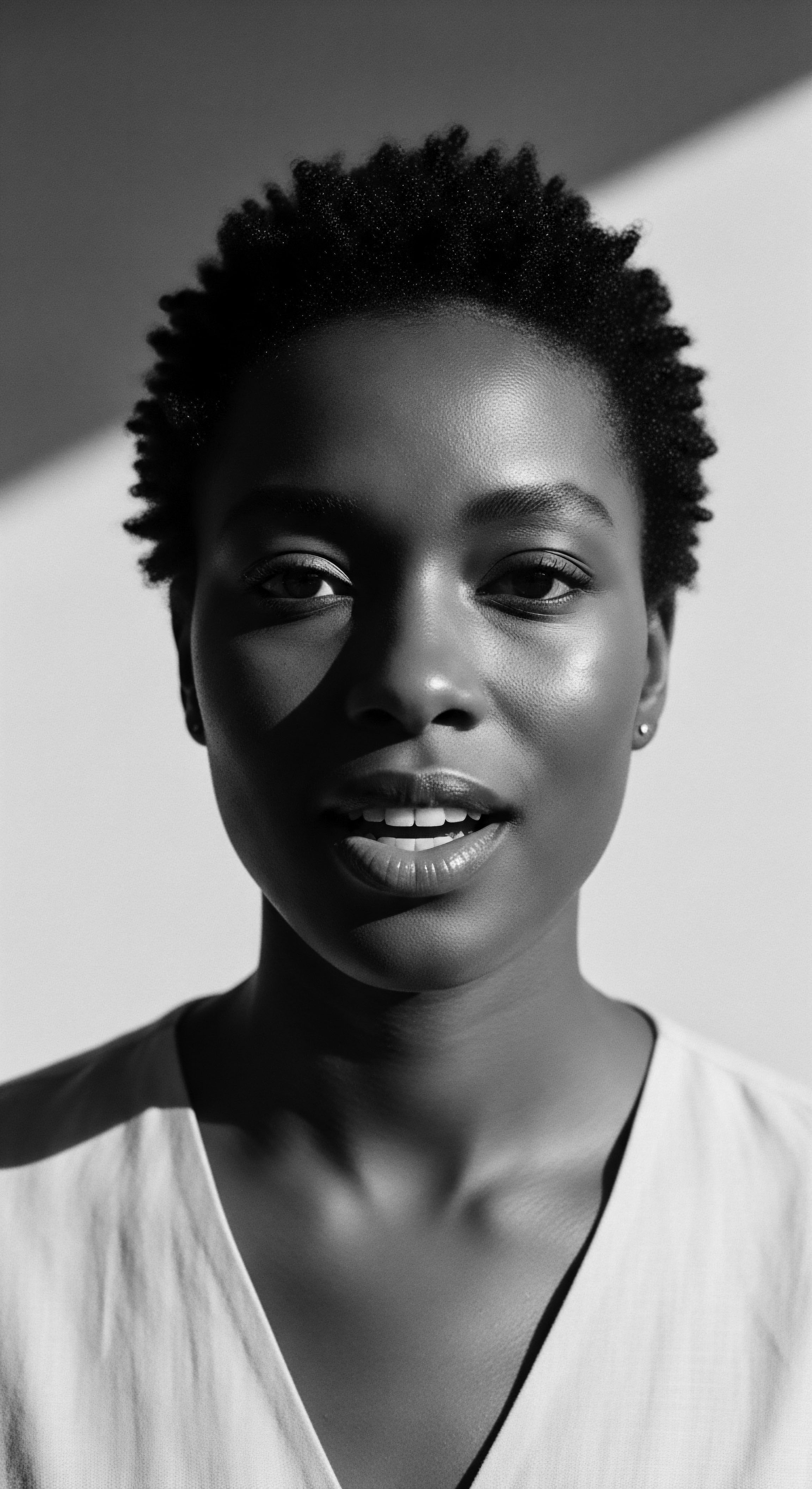
Relay
The historical methods that protected Afro-textured hair extend beyond mere external applications; they were deeply rooted in a holistic philosophy that intertwined physical wellness, communal practices, and ancestral reverence. This comprehensive approach, a relay of wisdom across generations, acknowledged hair not as an isolated entity, but as an integral part of a person’s complete being, connected to their environment and their lineage. This advanced understanding allowed for a multifaceted system of care that transcended simple cosmetic routines.

Holistic Influences on Hair Well-Being
Ancestral wellness philosophies recognized the profound interplay between internal health and external vitality, including that of the hair. Diet, spiritual practices, and communal harmony all contributed to a person’s overall wellness, which in turn was reflected in the health of their hair. Traditional African healing systems often incorporated specific plant-based remedies for hair and scalp ailments, understanding that a nourished body supported strong strands. Ethnobotanical studies of African communities, such as the Afar people of Northeastern Ethiopia, document the use of various plant species for hair and skin care, emphasizing the holistic connection.
Leaves of plants like Ziziphus spina-christi and Sesamum orientale were frequently used, applied topically as hair treatments or leave-in conditioners. This suggests a deep awareness of nutritional and restorative properties found in nature, applied for both internal balance and external luster.
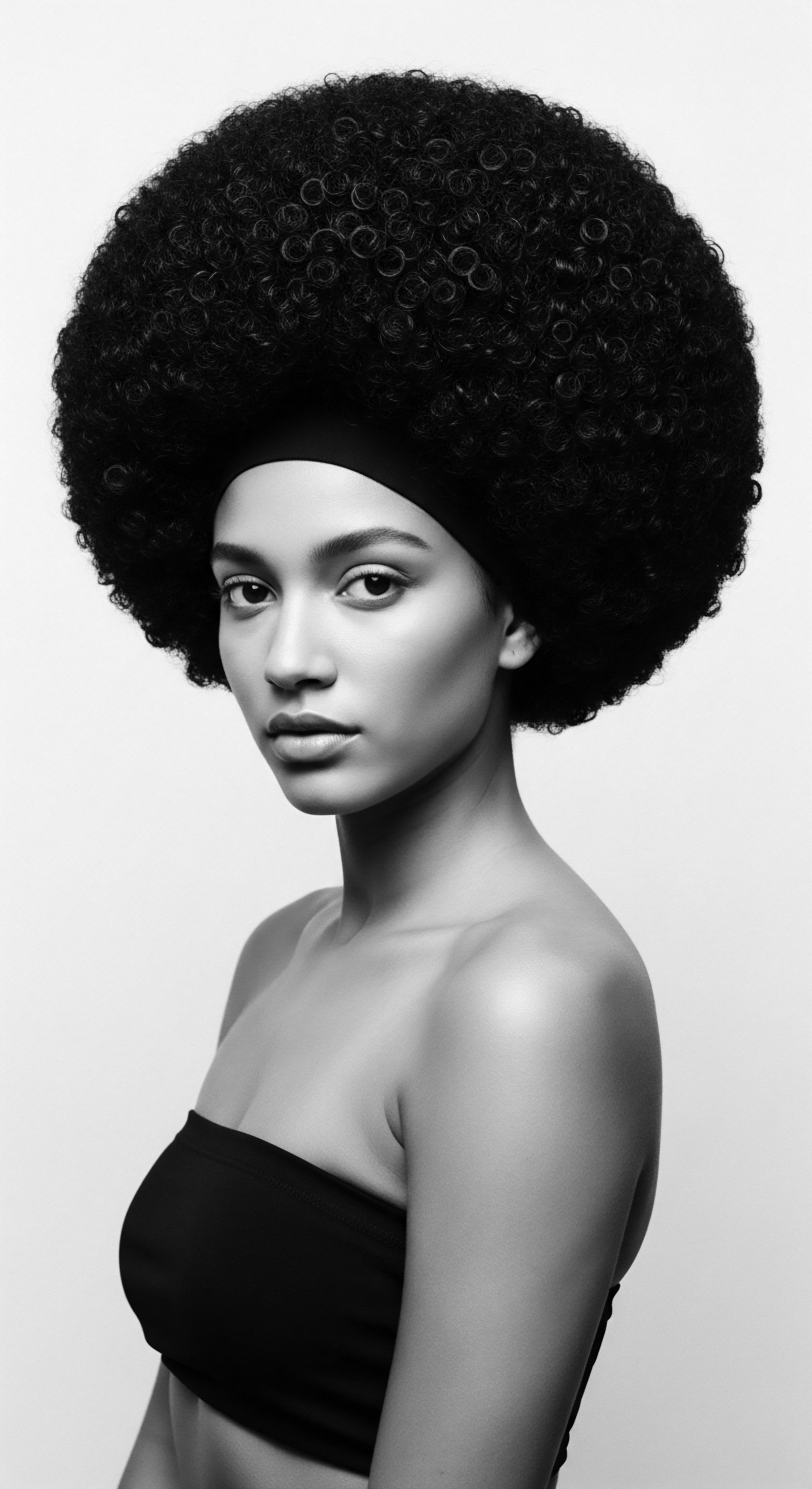
The Nighttime Sanctuary ❉ Protecting Strands at Rest
A particularly insightful historical care method involved safeguarding hair during periods of rest. The vulnerability of exposed hair to friction and moisture loss during sleep was intuitively understood. This wisdom gave rise to the tradition of nighttime hair protection , often involving head coverings. While modern satin bonnets are a relatively recent innovation, the concept of covering the hair at night has deep heritage roots.
Headwraps, often made of cotton or other locally available fabrics, were repurposed or specifically used to envelop the hair before sleep. This practice shielded strands from abrasive surfaces, such as rough sleeping mats or pillows, which could cause breakage and strip moisture. It maintained the integrity of intricate styles, preserving the effort of daytime styling and extending their longevity. This daily ritual underscored a commitment to consistent protection, recognizing the cumulative impact of small acts of care.
Ancestral traditions underscored a profound commitment to protecting hair even during sleep, using head coverings as an intuitive method for preserving moisture and structural integrity.
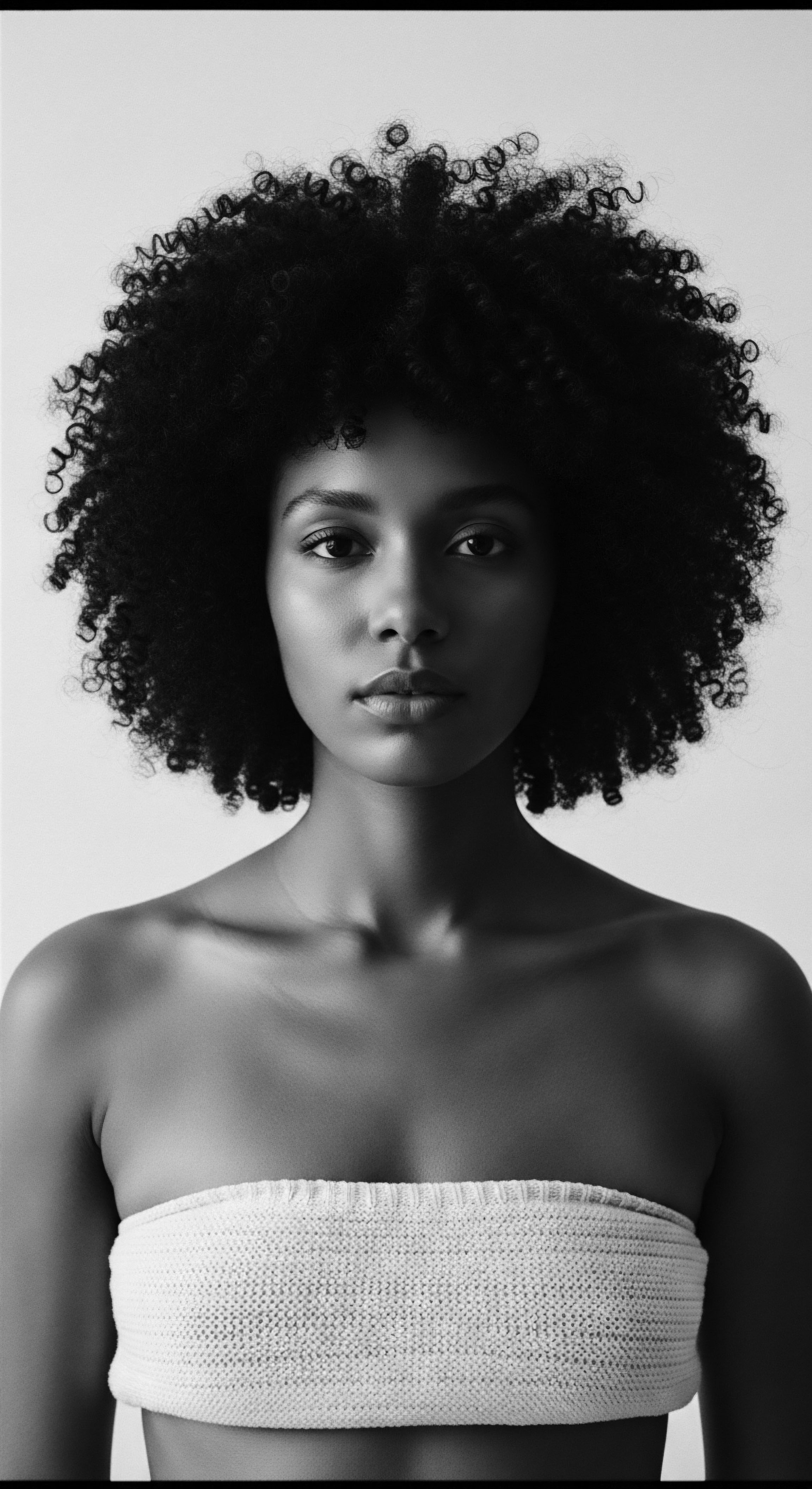
Ancestral Ingredients and Their Scientific Echoes
The materia medica of historical Afro-textured hair care was bountiful, drawing directly from the surrounding natural world. These ingredients were selected for properties that modern science now validates.
- Shea Butter ❉ Beyond its emollient qualities, shea butter contains cinnamic acid, offering mild natural UV protection, historically safeguarding hair from sun damage in equatorial regions (Falconi, as cited in).
- African Black Soap ❉ Crafted from the ash of cocoa pods and plantain skins, combined with palm and coconut oils, this soap provided a gentle, effective cleanser. Its natural ingredients soothe scalp irritation and aid in combating dandruff, promoting a healthy environment for hair growth.
- Castor Oil ❉ Widely used in ancient Egypt and various African cultures, this dense oil was prized for its ability to strengthen hair and promote circulation to the scalp, encouraging healthy growth.
- Henna ❉ Employed for thousands of years, including by ancient Egyptians, henna was not only a natural dye but also a hair strengthener, improving texture and balancing scalp pH.
- Honey ❉ A humectant, honey was used to draw moisture from the air into the hair, locking it in. Its antibacterial and antifungal properties contributed to scalp health.
- Beeswax ❉ Applied to create a protective barrier around the hair, beeswax helped seal in moisture, smooth the hair cuticle, and provide hold for styles.
These selections were not random; they were the culmination of generations of observation and experimentation, a testament to ancestral ethnobotanical knowledge. The traditional methods of preparing these ingredients, such as the specific boiling and crushing processes for shea butter, ensured their efficacy and availability for consistent care.

Addressing Hair Concerns ❉ Ingenuity in Traditional Solutions
Historical communities faced hair concerns akin to those of today ❉ dryness, breakage, and scalp conditions. Their solutions, however, were intrinsically tied to the resources at hand and communal wisdom. For issues like dryness, the layering of oils and butters after water-based cleansing was common practice, mimicking what is now understood as the “LOC” (Liquid, Oil, Cream) method for moisture retention. Scalp health was maintained through cleansers like African black soap, which deeply cleansed without stripping necessary oils.
For more persistent conditions, specific herbal preparations or mud washes, such as Rhassoul clay from Morocco, provided gentle but effective cleansing, removing impurities without harsh chemicals. The collective memory of how to address these concerns formed a vital component of the inherited care system.
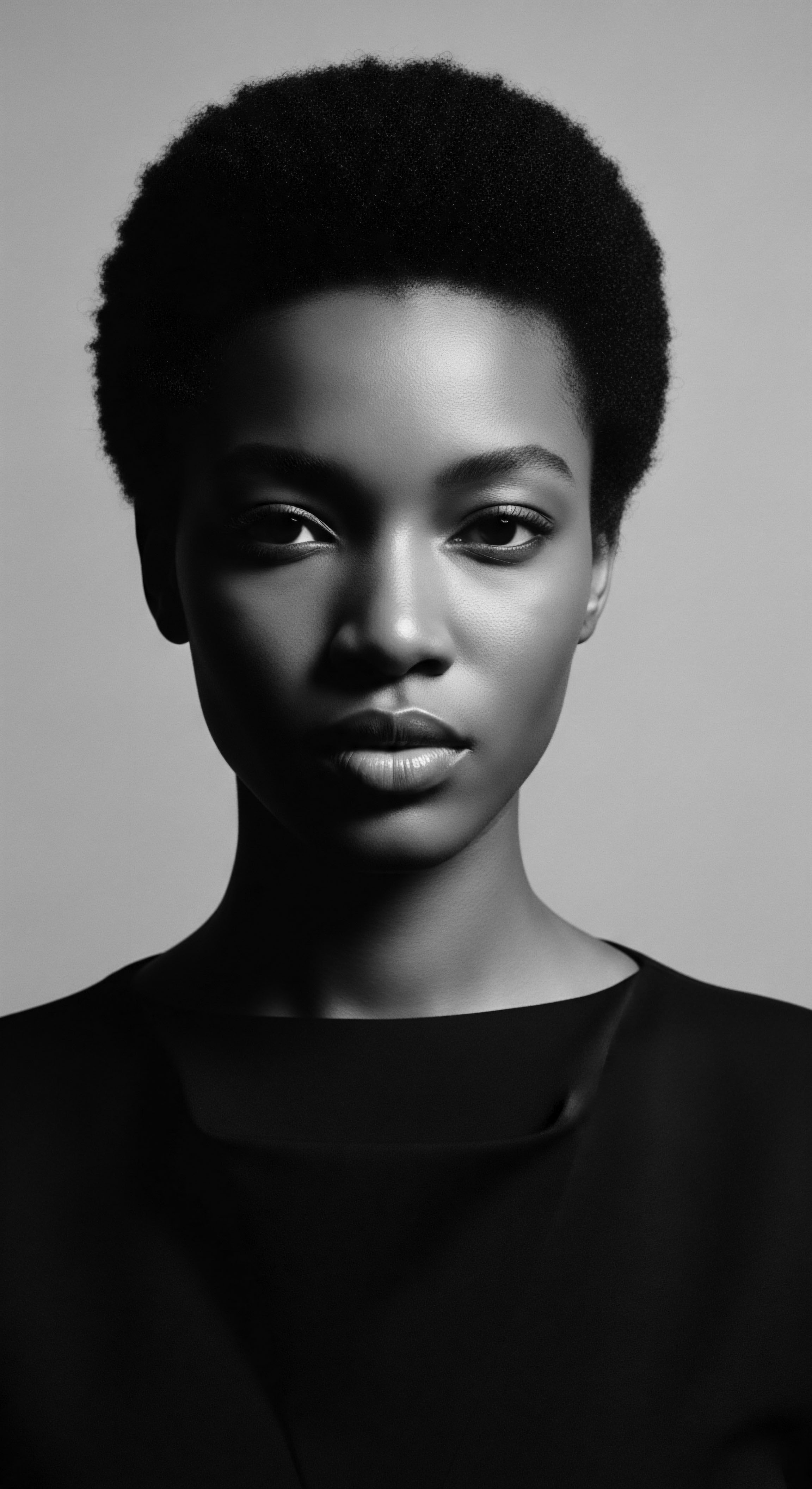
The Living Archive of Community Care
Perhaps the most powerful protective method was the communal aspect of hair care itself. Hair styling was rarely a solitary endeavor; it was a shared experience, particularly among women. Mothers taught daughters, aunts guided nieces, and friends gathered for hours or even days to braid and style each other’s hair. These gatherings served as invaluable spaces for storytelling, the transmission of skills, and the strengthening of social bonds.
The communal practice reinforced a sense of shared heritage and responsibility for the well-being of each other’s hair. This intergenerational transfer of knowledge ensured that the intricate care methods, the understanding of hair’s unique properties, and the cultural significance embedded within each style, were not lost, but rather relayed forward, a living archive adapting and surviving through time. The lessons learned in these spaces, the patience, the gentle handling, and the deep respect for the hair, formed the bedrock of its historical protection.

Reflection
The journey through historical care methods for Afro-textured hair unveils a legacy far richer than mere physical grooming. It reveals a story of profound connection to heritage , an enduring testament to the ingenuity and wisdom of African and diasporic communities. Each method, from the careful selection of natural ingredients to the intricate artistry of protective styles, stands as a whisper from the past, a guide for the present, and a beacon for the future. The strands that crown us carry the echoes of ancestral hands, their meticulous care a silent language of love and resilience passed through generations.
These practices highlight a timeless understanding ❉ textured hair, with its coils and bends, demands a gentle, informed approach. The lessons of moisture retention, scalp vitality, and low manipulation—understood and applied centuries ago—continue to hold profound relevance in today’s world. They remind us that true care is not a fleeting trend, but a continuous dialogue with our body’s innate wisdom, shaped by the historical and cultural context of our collective experience. To tend to Afro-textured hair with this historical lens is to honor a living library, ensuring its narratives of beauty, strength, and survival continue to speak volumes for generations to come.

References
- Byrd, Ayana D. and Lori L. Tharps. Hair Story ❉ Untangling the Roots of Black Hair in America. St. Martin’s Griffin, 2014.
- Everitt, Arthur B. The World of Hairdressing ❉ An Illustrated History. Pergamon Press, 1964.
- Fu-Kiau, Kimbwandende Kia Bunseki. African Cosmology of the Bantu-Kongo ❉ Telo Via Telo. Athelia Henrietta Press, 2001.
- Langenheim, Jean H. Plant Resins ❉ Chemistry, Evolution, Ecology, and Ethnobotany. Timber Press, 2003.
- McMichael, Amy J. “Hair breakage in normal and weathered hair ❉ Focus on the Black patient.” Journal of Investigative Dermatology Symposium Proceedings, vol. 12, no. 2, 2007, pp. 6-9.
- Omotos, Adetutu. “The Cultural Significance of Hair in Traditional African Societies.” Journal of Pan African Studies, 2018.
- Richards, G. M. C. O. Oresajo, and R. M. Halder. “Structure and function of ethnic skin and hair.” Dermatologic Clinics, vol. 21, no. 4, 2003, pp. 595-600.
- Sieber, Roy, and Frank Herreman. Hair in African Art and Culture. Museum for African Art, 2000.
- Stewart, Wendy P. The Handbook of African Hair Care. W.P. Stewart Enterprises, 2007.
- Wong, Nikita, Kirk Williams, Starling Tolliver, and Geoffrey Potts. “Historical Perspectives on Hair Care and Common Styling Practices in Black Women.” Cutis, vol. 115, no. 3, 2025, pp. 95-98.
